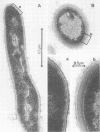Abstract
Cells of Nocardia asteroides undergo structural and chemical changes, especially in the cell wall, during growth in brain heart infusion broth. Experiments were devised to determine whether these changes affected the virulence of Nocardia for mice. It took, on the average, 1,380 times the number of colony-forming units at the stationary phase to achieve the same mortality induced by the log-phase cells. Cells in either the lag phase or early stationary phase of growth were intermediate in the numbers of colony forming units required to kill mice. Dry-weight determinations at different stages of growth demonstrated that the log-phase organisms were approximately 10 times heavier than stationary-phase cells. Thus, on the basis of dry-weight (micrograms) values, the average colony-forming unit of log phase is approximately 130 times more virulent than in stationary-phase cultures. Therefore, the stage of growth affects greatly the virulence of N. asteroides.
Full text
PDF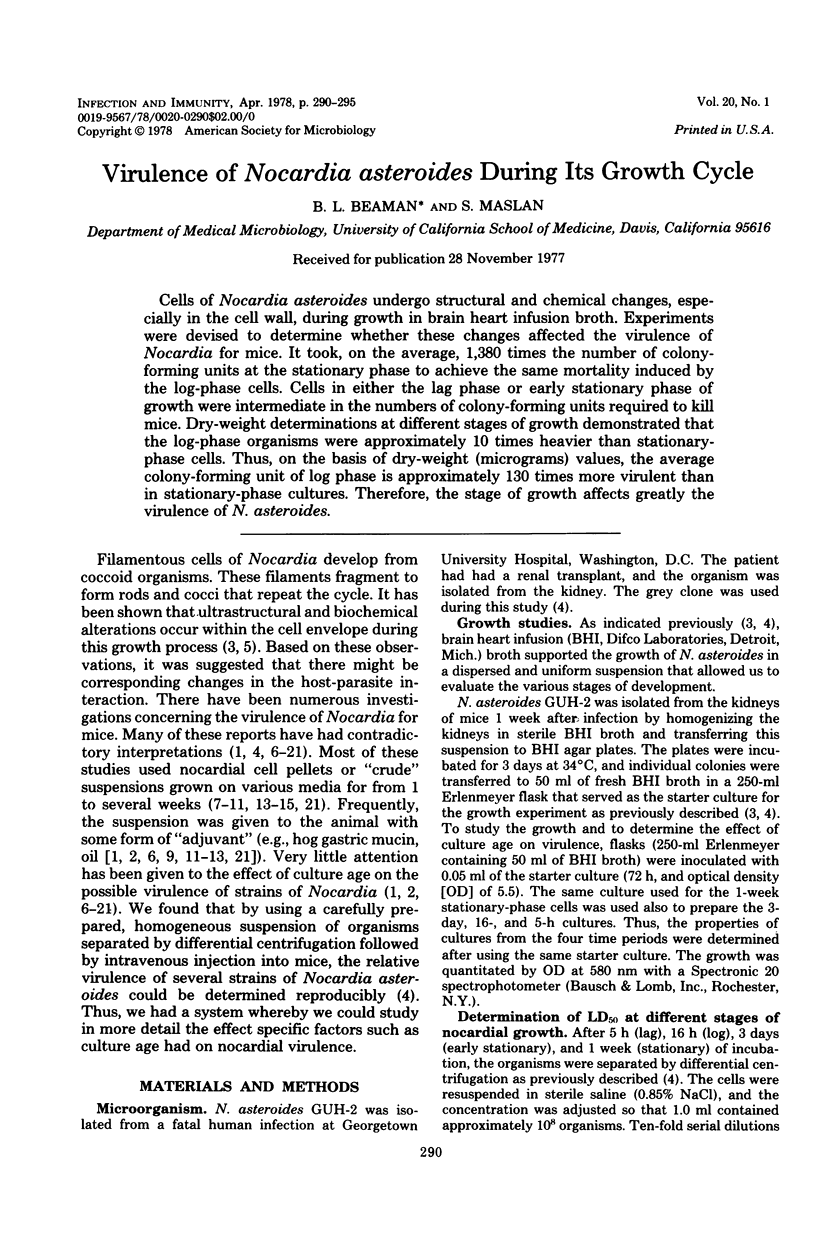
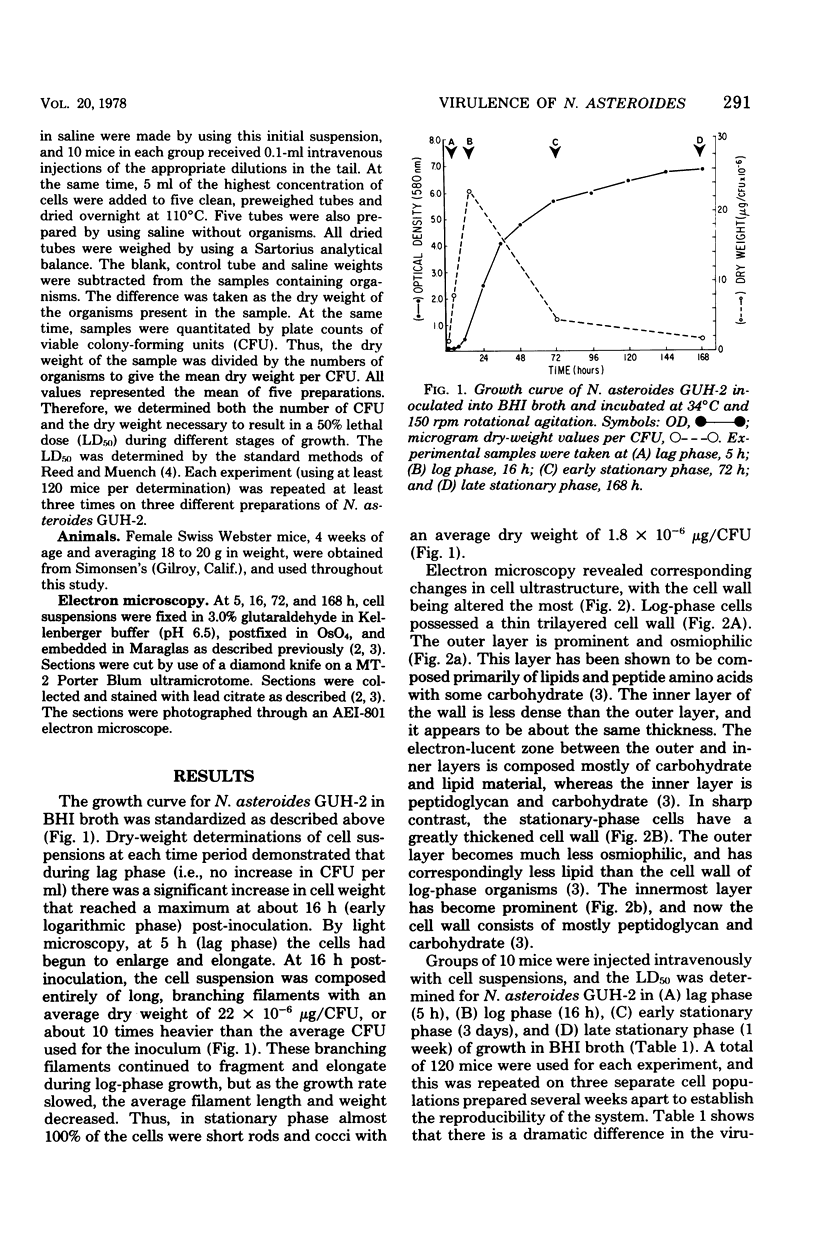
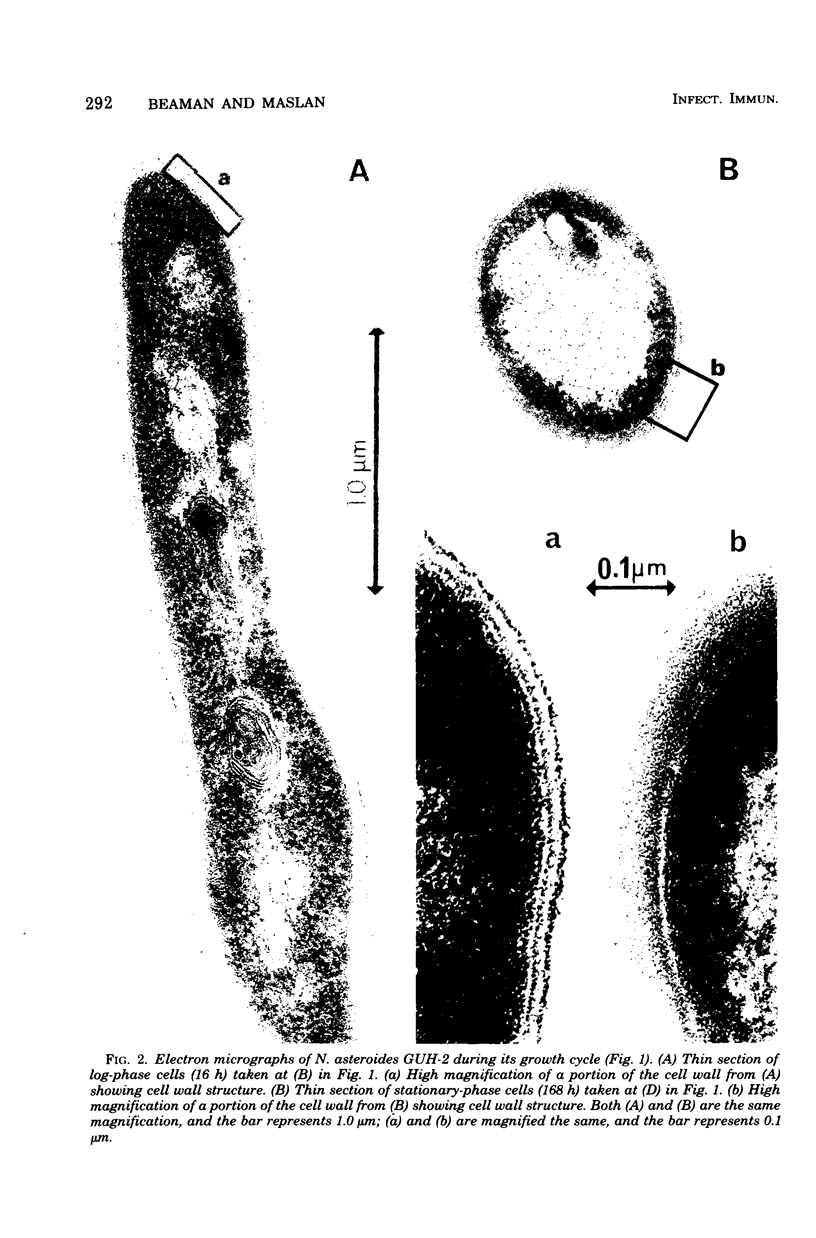
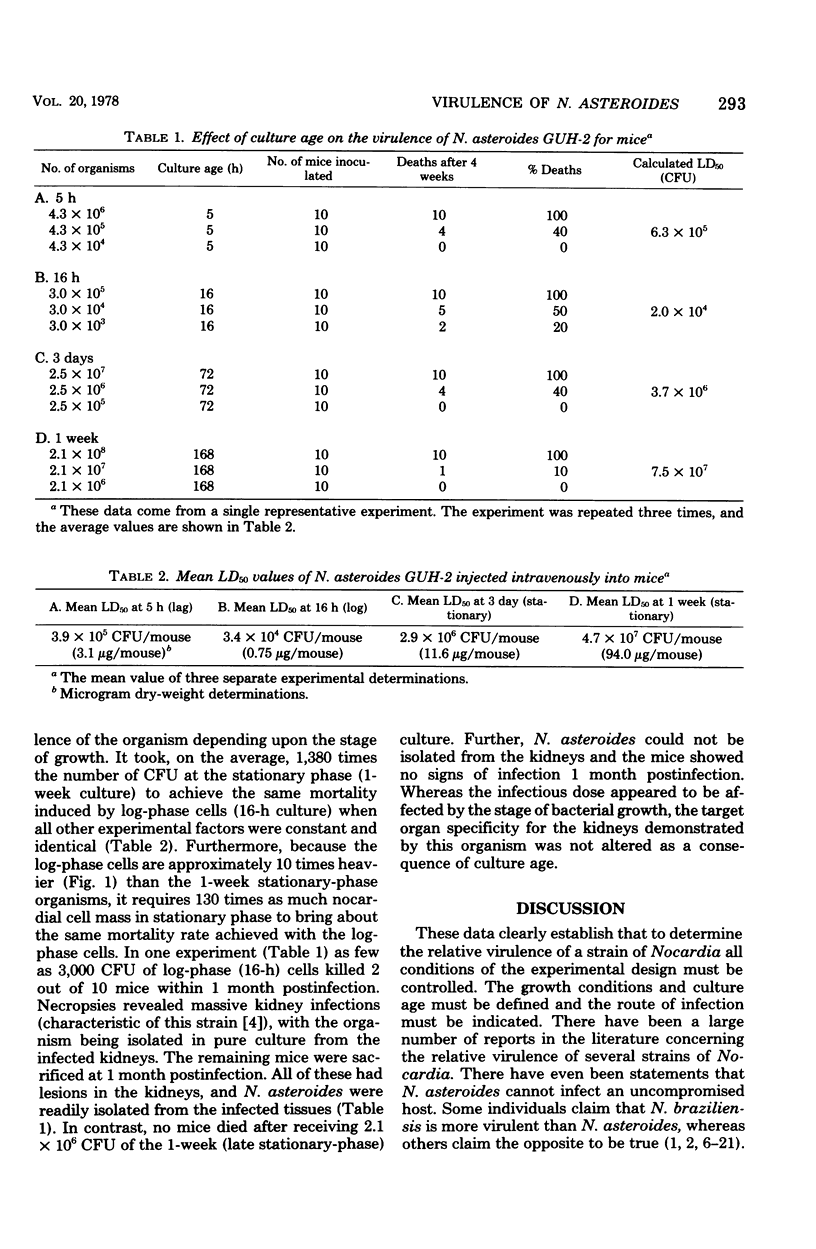
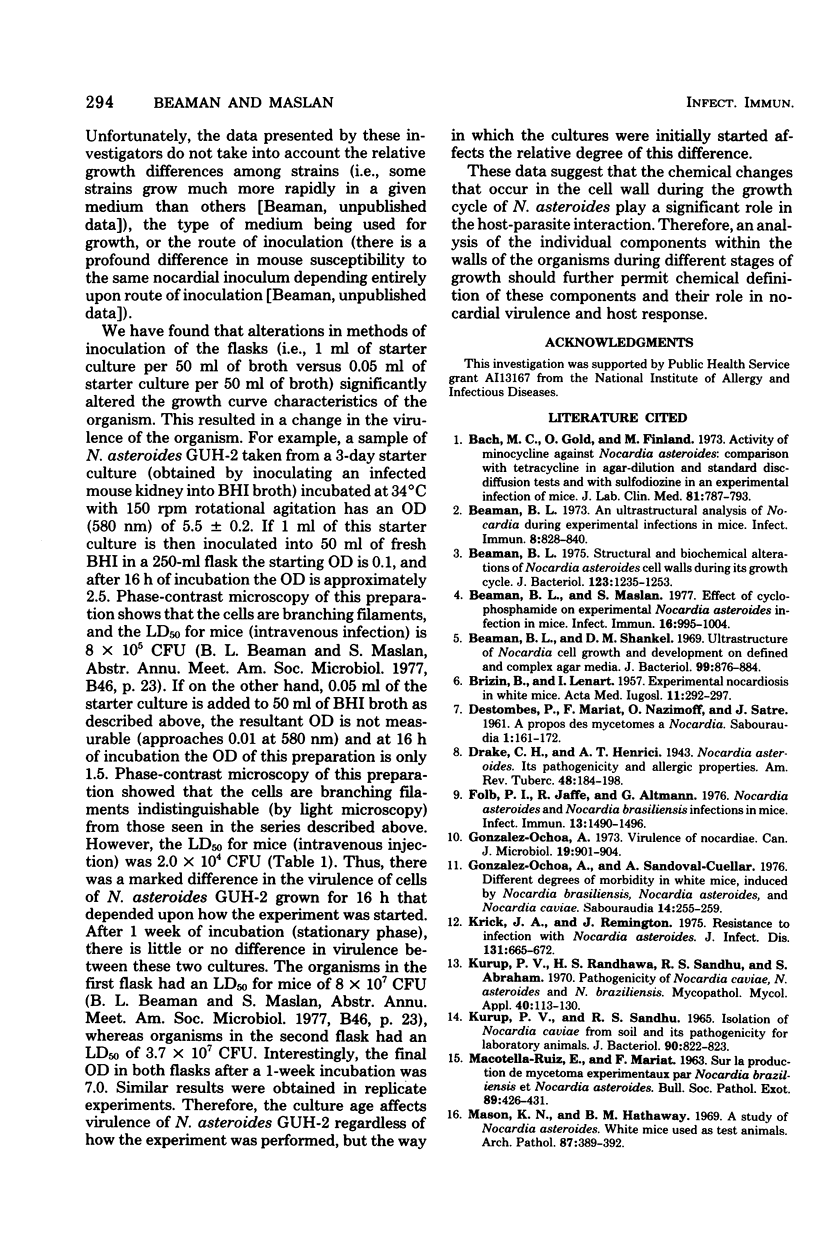
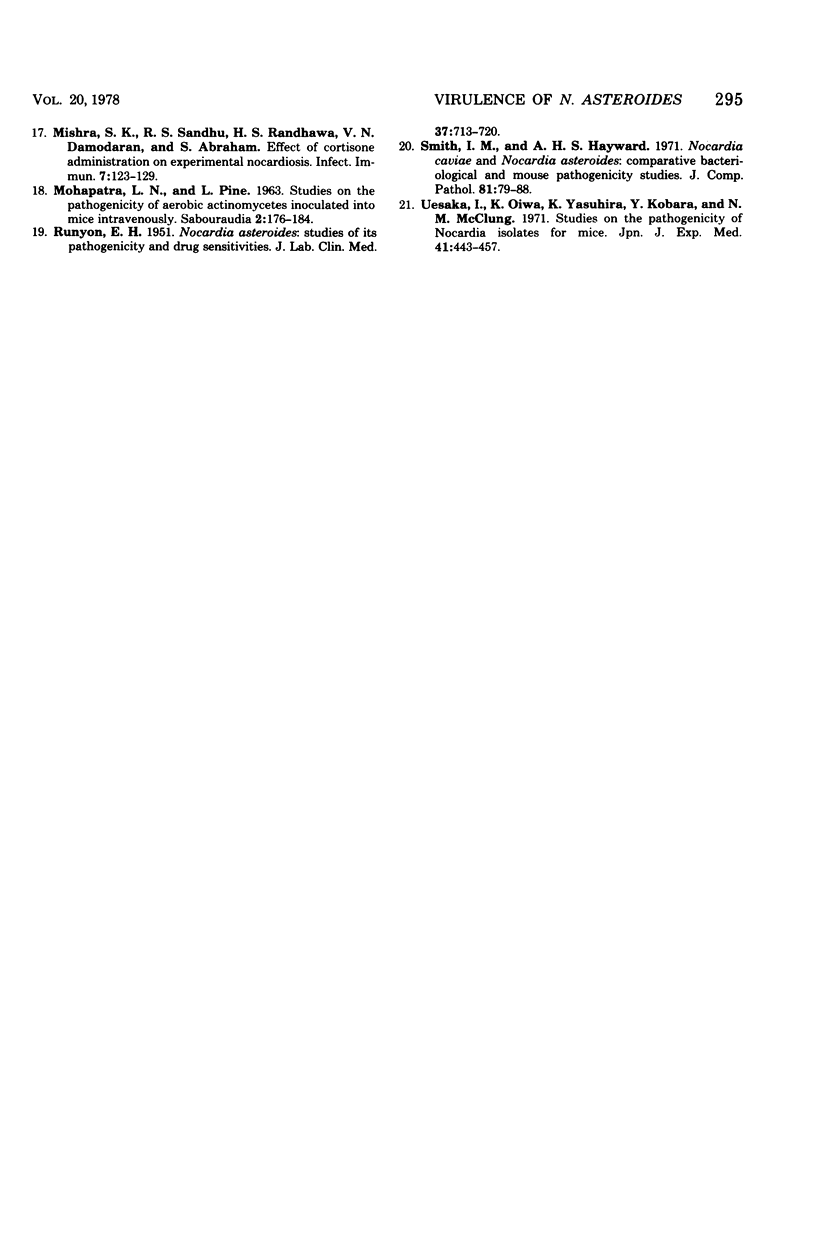
Images in this article
Selected References
These references are in PubMed. This may not be the complete list of references from this article.
- Bach M. C., Gold O., Finland M. Activity of minocycline against Nocardia asteroides: comparison with tetracycline in agar-dilution and standard disc-diffusion tests and with sulfadiazine in an experimental infection of mice. J Lab Clin Med. 1973 May;81(5):787–793. [PubMed] [Google Scholar]
- Beaman B. L. An ultrastructural analysis of Nocardia during experimental infections in mice. Infect Immun. 1973 Nov;8(5):828–840. doi: 10.1128/iai.8.5.828-840.1973. [DOI] [PMC free article] [PubMed] [Google Scholar]
- Beaman B. L., Maslan S. Effect of cyclophosphamide on experimental Nocardia asteroides infection in mice. Infect Immun. 1977 Jun;16(3):995–1004. doi: 10.1128/iai.16.3.995-1004.1977. [DOI] [PMC free article] [PubMed] [Google Scholar]
- Beaman B. L., Shankel D. M. Ultrastructure of Nocardia cell growth and development on defined and complex agar media. J Bacteriol. 1969 Sep;99(3):876–884. doi: 10.1128/jb.99.3.876-884.1969. [DOI] [PMC free article] [PubMed] [Google Scholar]
- Beaman B. L. Structural and biochemical alterations of Nocardia asteroides cell walls during its growth cycle. J Bacteriol. 1975 Sep;123(3):1235–1253. doi: 10.1128/jb.123.3.1235-1253.1975. [DOI] [PMC free article] [PubMed] [Google Scholar]
- DESTOMBES P., MARIAT F., NAZIMOFF O., SATRE J. [Apropos of mycetomas from Nocardia]. Sabouraudia. 1961 Oct;1:161–172. [PubMed] [Google Scholar]
- Folb P. I., Jaffe R., Altmann G. Nocardia asteroides and Nocardia brasiliensis infections in mice. Infect Immun. 1976 May;13(5):1490–1496. doi: 10.1128/iai.13.5.1490-1496.1976. [DOI] [PMC free article] [PubMed] [Google Scholar]
- Gonzalez Ochoa A. Virulence of nocardiae. Can J Microbiol. 1973 Aug;19(8):901–904. doi: 10.1139/m73-144. [DOI] [PubMed] [Google Scholar]
- González-Ochoa A., Sandoval-Cuellar A. Different degrees of morbidity, in the white mouse, induced by Nocardia brasiliensis, Nocardia asteroides and Nocardia caviae. Sabouraudia. 1976 Nov;14(3):255–259. doi: 10.1080/00362177685190381. [DOI] [PubMed] [Google Scholar]
- Krick J. A., Remington J. S. Resistance to infection with Nocardia asteroides. J Infect Dis. 1975 Jun;131(6):665–672. doi: 10.1093/infdis/131.6.665. [DOI] [PubMed] [Google Scholar]
- Kurup P. V., Randhawa H. S., Sandhu R. S., Abraham S. Pathogenicity of Nocardia caviae, N. asteroies and N. brasiliensis. Mycopathol Mycol Appl. 1970;40(2):113–130. doi: 10.1007/BF02051989. [DOI] [PubMed] [Google Scholar]
- Kurup P. V., Sandhu R. S. Isolation of Nocardia caviae from Soil and Its Pathogenicity for Laboratory Animals. J Bacteriol. 1965 Sep;90(3):822–823. doi: 10.1128/jb.90.3.822-823.1965. [DOI] [PMC free article] [PubMed] [Google Scholar]
- Mason K. N., Hathaway B. M. A study of Nocardia asteroides. White mice used as test animals. Arch Pathol. 1969 Apr;87(4):389–392. [PubMed] [Google Scholar]
- RUNYON E. H. Nocardia asteroides; studies of its pathogenicity and drug sensitivities. J Lab Clin Med. 1951 May;37(5):713–720. [PubMed] [Google Scholar]
- Smith I. M., Hayward A. H. Nocardia caviae and Nocardia asteroides: comparative bacteriological and mouse pathogenicity studies. J Comp Pathol. 1971 Jan;81(1):79–87. doi: 10.1016/0021-9975(71)90058-2. [DOI] [PubMed] [Google Scholar]
- Uesaka I., Oiwa K., Yasuhira K., Kobara Y., McClung N. M. Studies on the pathogenicity of Nocardia isolates for mice. Jpn J Exp Med. 1971 Oct;41(5):443–457. [PubMed] [Google Scholar]



